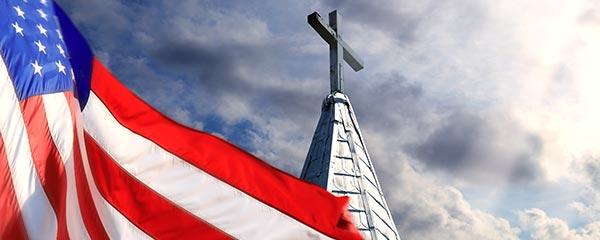This is the second in a four-part series on the "State of the States" being released this week on Â鶹´«Ă˝AV.com. The series examines state-by-state differences in party affiliation, religiosity, consumer confidence, and employer hiring and letting go, based on Â鶹´«Ă˝AV Poll Daily tracking data collected throughout 2008.
PRINCETON, NJ -- An analysis of more than 350,000 interviews conducted by Â鶹´«Ă˝AV in 2008 finds Mississippi, Alabama, South Carolina, Tennessee, Louisiana, and Arkansas to be the most religious states in the nation. Vermont, New Hampshire, Maine, and Massachusetts are the least religious states.


The large data set of interviews conducted as part of the Â鶹´«Ă˝AV Poll Daily tracking program in 2008 provides uniquely reliable estimates of state-level characteristics. Each sample of state residents was weighted by demographic characteristics to ensure it is representative of the state's population.
There are a number of ways to measure the relative religiosity of population segments. For the current ranking, Â鶹´«Ă˝AV uses the responses to a straightforward question that asks: "Is religion an important part of your daily life?" The rankings are based on the percentage of each state's adult (18 and older) population that answers in the affirmative.
The United States is generally a religious nation, although the degree of this religiosity varies across states and regions of the country. A robust 65% of all Americans (across the entire U.S. population) reported in 2008 that religion was important in their daily lives.

Additionally, at least half of the residents of all but four states (Vermont, New Hampshire, Maine, and Massachusetts) say religion is important in their daily lives.
And, although there is a wide range in the self-reported importance of religion, from a high of 85% for residents of Mississippi to a low of 42% for residents of Vermont, the distribution of religiosity by state takes the shape of a bell-shaped curve, clustered around the overall nationwide mean of 65%. Twenty-three of the 50 states and District of Columbia are in the range of 60% to 70% saying religion is important.
The accompanying map shows religiosity by state for 2008, ranging from states that can be considered the most religious to those that are the least religious on a relative basis. (The full data for all states appear at the end of the article.)

The map demonstrates that the relative importance of religion in Americans' lives has interesting geographical differentiation. Clearly, Southern states are populated by residents with relatively high religiosity, as are several other states in the middle of the country, stretching from Texas through Oklahoma to Kansas and the two Dakotas.
At the same time, states whose residents are least likely to report that religion is important tend to be concentrated in New England and the far West (with the exception of Utah). Additionally, levels of religiosity are lower in several Mid-Atlantic states.
Implications
The question of why residents of some states (e.g., Mississippi and other Southern states) are highly likely to report that religion is an important part of their lives, while residents of other states (e.g., Vermont and other New England states) are much less likely to report the same is fascinating, but difficult to answer simply.
Differing religious traditions and denominations tend to dominate historically in specific states, and religious groups have significantly different patterns of religious intensity among their adherents. The states have differing racial and ethnic compositions, which in turn are associated with differing degrees of religiosity. Certain states may attract in-migrants with specific types of religious intensity. In addition, there may be differing "state cultures" that are themselves associated with life approaches that give varying degrees of credence to religion as a guiding force.
Survey Methods
Results are based on telephone interviews with 355,334 national adults, aged 18 and older, conducted in 2008 as part of Â鶹´«Ă˝AV Poll Daily tracking. For results based on the total sample of national adults, one can say with 95% confidence that the maximum margin of sampling error is ±1 percentage points.
The margin of sampling error for most states is ±1 percentage point, but is as high as ±4 percentage points for the District of Columbia, Wyoming, and North Dakota.
Interviews are conducted with respondents on land-line telephones (for respondents with a land-line telephone) and cellular phones (for respondents who are cell-phone only).
In addition to sampling error, question wording and practical difficulties in conducting surveys can introduce error or bias into the findings of public opinion polls.

